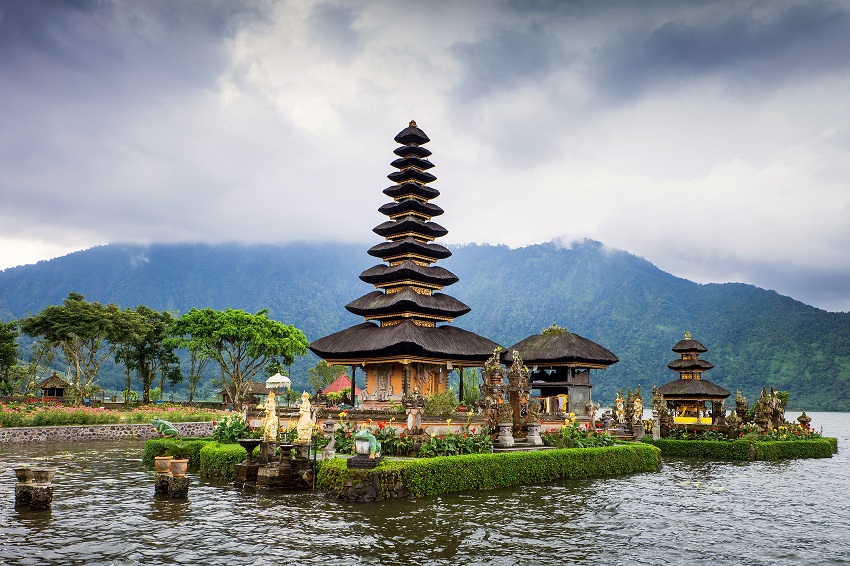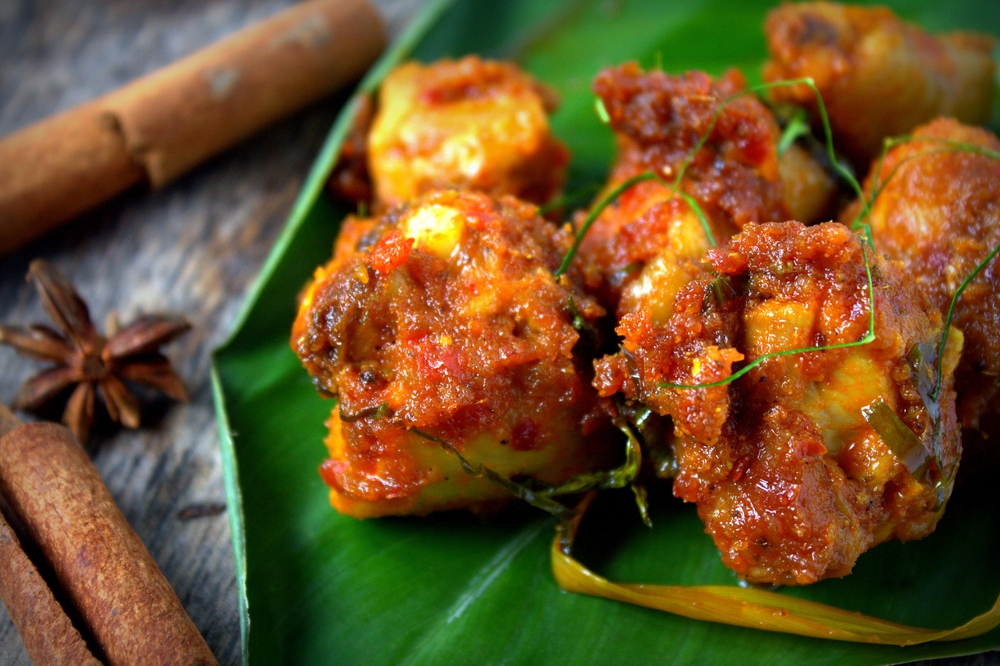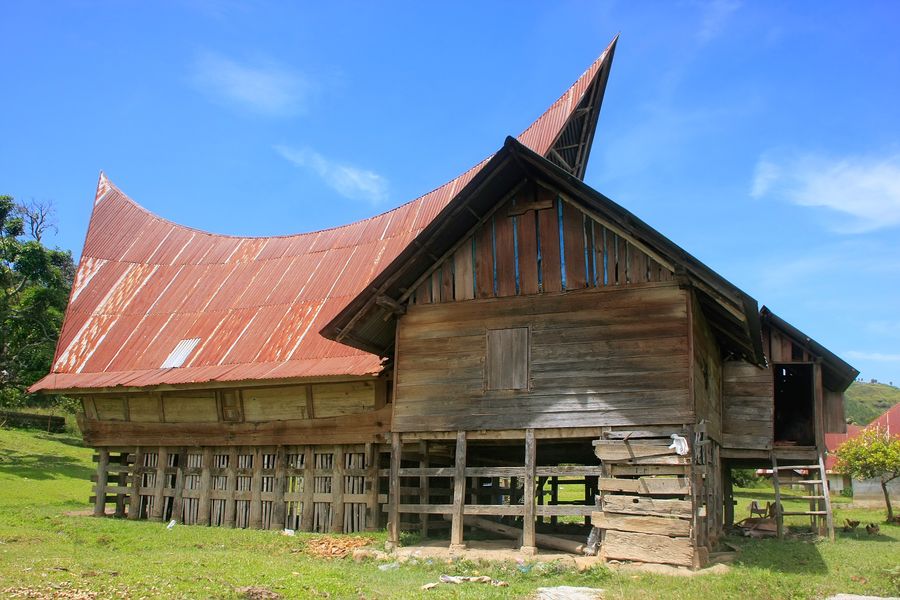Indonesia - belief and religion
Indonesia is country that has the highest number of Islamic population in South East Asia. Indonesian Constitution has so far recognized only six regions, Islam, Protestantism, Roman Catholicism, Hinduism, Buddhism, and Confucianism. (อรอนงค์ ทิพย์พิมล, 2557:2). The Islamic people make up 88.22% of the population followed by 8.92% of Christians, 1.81% of Hindus, 0.84% of Buddhists and 0.20% of Confucianists and other religions. (Jesudas M.Athyal,Editor, 2015:117) Before any religion came into existence in Indonesia, the natives had beliefs in superstitious where the holy deities drew both good and bad influences. When they contacted and traded with Indian people, Brahman-Hinduism was the first religion introduced and followed by Buddhism, Christianity and Islam.
Hinduism
Hinduism was introduced to Indonesia around the 2nd century by the Indian traders. One of the famous apostles was Sri Agastya. Hindu influences spread to a kingdom in Kalimantan called Kutai as it was evident Hinduism had been adopted widely on Indonesian archipelagos. Hinduism had been firmly established in Bali after the 8th century, and has been so until now. (Jesudas M.Athyal,Editor, 2015:118)
Bali is famous for its beautiful landscapes and holiness which is believed to be the God’s residence. The most important and highest mountain is Mount Agung, the central axis of the universe and a residence of Shiva. The religious place in the area is Pura Besaki Temple located on the South of Mount Agung. It was built as a tribute to the mountain, so the temple is the most famous and revered place on Bali island. (เชษฐ์ ติงสัญชลี, 2558:165) According to the Balinese religious belief, cows are God Vahana (riding). The biggest religious place, Candi Prambanan or Candi Rara Jonggrang, in Central Java is the world’s heritage. Java and Bali are Hindu landmarks attracting visitors around the world.
Buddhism
Buddhism arrived at Indonesian archipelagos in the 4th century with Indian traders in Java, Sumatra and Sulawesi. In 423, a Buddhist monk, Gunawarman, had reached Java where he fulfilled his mission of spreading Buddhism. Kaling Kingdom or Ho Ling Kingdom adopted Buddhism at a time when it was ruled by Queen Ratu Sima. (Jesudas M.Athyal,Editor, 2015:118)
The schools of Buddhism existing in Indonesia are Mahayana, Vajrayana, Theravada and Ekayana. Since most of the Buddhists there are Chinese, the Mahayana school is more popular than any other schools. On the other hand, the Theravada has been largely adopted in Indonesia because its doctrinal division emphasizes on living in the present. The Mahayana school places an emphasis on rituals and social works. The Vajrayana school is strict on forms of rituals. (ฉัตรสุมาลย์ กบิลสิงห์, 2556:226)
One of the most famous Buddhist-sacred places listed as 1 of the 7 wonders is Borobudur in central Java. It was built during 750-850 by Silane Dynasty which means “King of Mountains”. The sacred place conveys Buddhist ideas on the universe. According to aerial photographs, the dome is surrounded by the shrines signifying a symbol of the universe while engraved stones placed around the terraces depict a biography of Lord Buddha. At the pagoda’s base, high relief sculptures show lust and desires of a secular world. Good men will be born again in a better world, but bad men are going to be punished in the underworld. (เอลชา ไชนุดิน, 2552:59-60)
Some gave an opinion that Borobudur is not only a representation of Buddhist Universe and the 10 steps to nirvana, but also a bond to the past. Borobudur has never been a shrine containing Buddha Relics. It actually served as a royal tomb of Silane Dynasty. This attached the Buddhist-sacred place to ancestor worshipping. (เอลชา ไชนุดิน, 2552:59-60) Though, in later time, the Dynasty met the end of power, Borobudur stays. When the town is becoming more urbanized, convenient facilities are what people need. Areas around Borobudur are used for phone transmitter antennas which greatly affect the natural views of the place. Moreover, Borobudur is a magnet for tourists around the world. Billboards and advertising signs on both sides of the roads to the sacred place are so packed that it is hardly possible to appreciate the Borobudur views like people did in the past. (National geographic ฉบับภาษาไทย, 2553) Borobudur is a spiritual anchor for Buddhist Indonesians and is embraced by Buddhists and visitors around the world.
Christianity
Catholicism and Protestantism were introduced to Indonesia around the 6th century by the Portuguese, Dutch and British missionaries travelling to East Indonesia where Moluccas, North Sulawesi, Nusa, Tengkara, Papua and Kalimantan lied. Later, Christianity was spreading to coastal Borneo while, on Sulawesi Island, the missionaries were teaching the natives, Torajan people, there as well as the natives on Sumatra Island. Now people in Batak, Papua and Ambon around 90% are Christian. (Jesudas M.Athyal,Editor, 2015:120)
Islam
There are various explanations how Islam had emerged into this land. One of those cited that Islam was introduced to Indonesia in the 7th century by the Arabic traders on northern Sumatra. In the 9th century, the people of Perlak Kingdom were the pioneers in adopting Islam. On the other hand, another explanation cited that Islam in Indonesia was influenced by Gujarat in India around the 13th century. It reached Sumatra and was spreading to eastern Java. However, many kingdoms such as Demak, Mataram and Banten at that time were influenced by Islam. The Islamic invasion had succeeded in the 15th century as several kingdoms in Indonesian archipelagos largely adopted it. Now Indonesia is the country that has the highest number of Islamic population in South East Asia especially in Java and Sumatra where 98% of the people is Sunni-Islamic while the rest is Shia and Ahmadiyya.
It is clear that Islam plays a vital role in both political and secular aspects. Islam is not merely a religion, but it also a secular law having great influences in Indonesia for a long time. What seems to be a problem is the anti-state movement formed after the declaration of independence. Though Indonesians are mostly Islamic, they lack unity due to different doctrinal visions leading to conflicts over Islamic instructions. It gave birth to the anti-state movement with different causes. Nonetheless, the issue that has a great effect on Indonesian society is the declaration made by President Sukarno pronouncing that Indonesia is a secular state. In response to this incident, many anti-state movements made their appearances on the scene such as the Nahdatul Uiama-NU and the Jamaah Islamiyah-JI, which turns to be one of the most active terrorist groups in Southeast Asia. The Jamaah Islamiyah later turned against the West too. (รัฐกับมุสลิมในอินโดนีเซีย, 2550:5)
Another condition that gave birth to the anti-state movement is the act of occupying the non-Indonesian areas of the government. Aceh, for example, once was a home to the GAM (Gerakan Aceh Merdeka). Though the group was diminished, its members later founded a political party, Patai Aceh or PA, with its ideology demanding the independence for Aceh. (รัฐกับมุสลิมในอินโดนีเซีย, 2550:5)
In addition to forming the anti-state movements, some Islamic groups are provoking conflicts with Buddhists and Christians. They even destroyed non-Islamic religious places and icons bringing about losses and lives of the innocents.
Diversity in religions of Indonesia is not only the spiritual anchor of its people, but also a great contribution to tourism industry in the country. What is to be aware is the fact that a religious faith in social and political contexts that is changing every day. “Diversity in Unity” is what the government is holding onto, but these days religious conflicts are still concerned.
Bibliography
ฉัตรสุมาลย์ กบิลสิงห์. (2556). พระพุทธศาสนาเถรวาทในอินโดนีเซีย. ใน ฉัตรสุมาลย์ กบิลสิงห์, พระพุทธศาสนาในประเทศเพื่อนบ้าน (หน้า 222-228). กรุงเทพมหานคร: เรือนแก้วการพิมพ์.
เชษฐ์ ติงสัญชลี. (2558). ศิลปะชวา. กรุงเทพมหานคร: มติชน.
อรอนงค์ ทิพย์พิมล. (2557). สาธารณรัฐอินโดนีเซีย. กรุงเทพมหานคร: มหาวิทยาลัยธรรมศาสตร์.
เอลชา ไชนุดิน. (2552). ประวัติศาสตร์อินโดนีเซีย. กรุงเทพมหานคร: มูลนิธิโครงการตำราสังคมศาสตร์และมนุษยศาสตร์.
รัฐกับมุสลิมในอินโดนีเซีย. (2550). รัฐกับสังคมมุสลิมในอินโดนีเซีย. จุลสารความมั่นคงศึกษา, 5-37.
Jesudas M.Athyal,Editor. (2015). Religion in Southeast Asia. California.
National geographic ฉบับภาษาไทย. (2553). บุโรพุทโธ วิหารผู้ท้าทายกาลเวลา. National geographic ฉบับภาษาไทย, 56-59.





